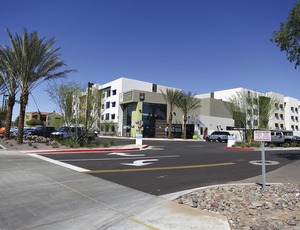From the slow economic recovery to the flourishing revival of urban residential projects, multiple trends are poised to make a big impact on the construction industry in the Southwest. Data centers, renovations and new roles for contractors as designers are also key movements affecting the region.


ENR Southwest's annual Watch List—based on input from industry experts, editorial research and data compiled by Dodge Data & Analytics—highlights the trends that are poised to define the coming year.
Slow Recovery
Forecasters expect slow growth despite a few megaproject starts in the Southwest
Heading into 2014, many projections hinted that the construction industry would see a spike in activity. While the optimistic projections did not entirely come to fruition last year—as evidenced by flat construction employment data, among other metrics—Arizona, Nevada and New Mexico construction is holding steady at the onset of 2015.
In October, Ken Simonson, chief economist with the Associated General Contractors, told the group's local members there are three reasons for the slow recovery in the West, and especially in Arizona and New Mexico: tight government spending, the transition to online shopping and the decline in the need for office space. He also noted that although Nevada has seen an uptick in commercial activity recently, it is due to that state's reliance on the gaming industry, a reflection of the improving economies in other states.
While many 2015 projections reveal slow growth in the Southwest, including a forecast by BBVA head economist Nathaniel Karp, opportunities are still available. Outside of Reno, for example, electric car manufacturer Tesla is constructing a $4-billion lithium-ion battery factory. In Tucson, Ariz., the new Streetcar is expected to bring development activity to the long-dormant downtown.
Data Centers
The Southwest has been a magnet for data centers, but a volatile future may lay ahead
According to a report by Luke Denmon with CBRE, the Phoenix metro area is the desired location in the Western U.S. for data centers that can handle and store all of the files and bytes that are expected to continue to flood the Internet. Two more large providers are expected to relocate to the Phoenix area by mid-2015.
Las Vegas, too, has seen a spate of large-scale data centers including the Cobalt Cheyenne. High-tech flag-bearers such as Zappos.com are now headquartered in the city. The Southwest is especially attractive because of its dry climate and lack of power interruptions from natural disasters, according to experts.
The rise of the cloud is expected to increase competition and therefore space needs, but data centers are also vulnerable since the Internet is a worldwide industry. Joe Skorupa, vice president and analyst at Gartner, Stamford, Conn., said in a late 2014 report that while opportunities will abound in building data centers, a volatile market makes picking a regional powerhouse nearly impossible.

Post a comment to this article
Report Abusive Comment